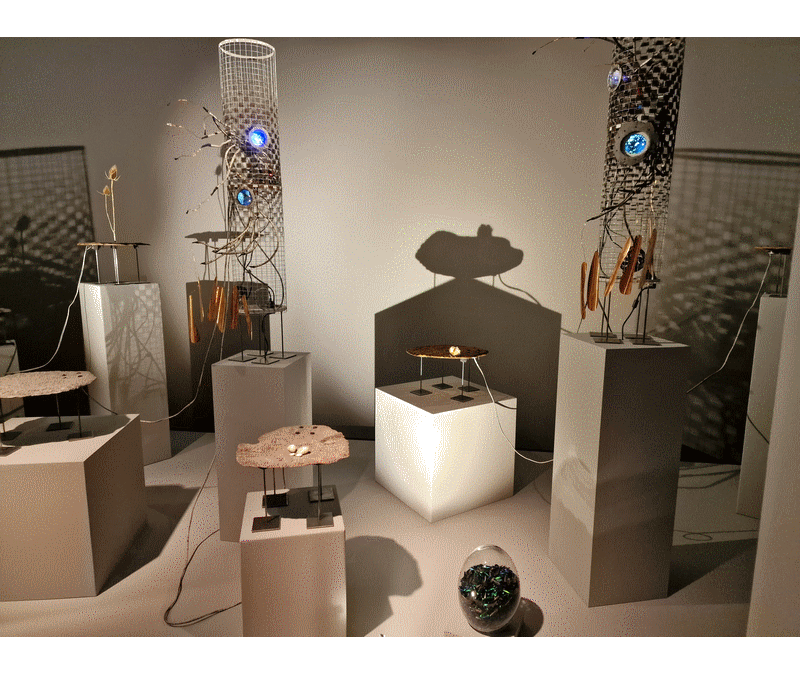Nayari Castillo
“Forest Assemblages”
Phase I — Sensing Cohabitation in the Forest
Nayarí Castillo’s artistic research project focuses on creating experiments in and around the urban forests in Graz, Austria. Important part of her research consists of developing an Asynchronous Cohabitation Pod (ACP) in order to explore the idea of cohabitation of different species. The pod is a recording field station where different animals, plants, and mushrooms leave their traces. The field station includes AI components, environmental measuring devices (barometer, Campbell-stoke machine, pluviometer, etc.), and other recording devices that capture, for example, the movements of animals that approach the machine or the growing patterns of plants and mushrooms around the station.
Castillo’s artistic research explores the possibility of multispecies cohabitation at different times or rhythms, namely species that live next to each other or just pass each other by, and has the potential to activate asynchronous forms of togetherness, for example: “The machine could capture the movement of a night snake, recording it and using the movements to generate sound; others (humans and non-humans) will approach the device during the day, several hours after the animal has left, perceiving the snake only through generated sound. This creates the possibility of different forms of gathering and coexistence, a way of being in the space at different times, but still being affected by the presence of the other.”
The Asynchronous Cohabitation Pod is a field research machine, a “sensing living shelter”, that is capable of gathering data about different cohabitants, their activities, and their different rhythms, and translating them into aesthetic forms (e.g. sound).
Methodology
The creation of such a complex structure requires an interdisciplinary approach. Castillo collaborates with many specialists (such as biologists and weather specialists). She works with researcher and sound artist Hanns Holger Rutz on the essential parts of the ACP – the sensors and AI components for recording and reacting with the organisms. Since 2021, Rutz and Castillo have been developing Rogues (see a selection on the photographs), a project that involves the creation of intermedia objects (AI “beings”) that exchange sensory data with other beings and the environment.
“A Rogue is a thing that lives with you, a multisensory and multimodal object, located somewhere, perhaps in an exhibition space, a private space, or outside waiting for birds. Nobody has seen or heard a Rogue yet, but their size is in the magnitude of a human child. Like other creatures, a Rogue may also have different dimensions. A Rogue is an object that emits sound and image, and absorbs the sensations of its surroundings. It is not a surveillance device; it senses, for example, touch, proximity, and light. It is a body with rudimentary organs, which are part of the experiment. When there are several Rogues in a space, they can also make connections with each other. A Rogue grows a memory of its place, accumulating sensor data, employing algorithms, and adopting fragments of data from other Rogues.”
As part of the Forest Encounters project, Castillo is working with Rutz to use the Rogues as sensing devices/parts attached to the ACP, a super sensorial recording/communication research station. A crucial part of the Rogues is their connection to ceramic plates, which artists use as vibrational material to generate sound. Currently, Castillo is investigating a range of different clays to use in the construction of the exterior surface of the research station.







